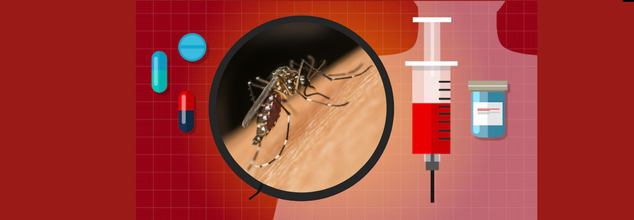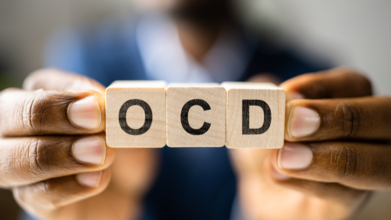- Health Conditions A-Z
- Health & Wellness
- Nutrition
- Fitness
- Health News
- Ayurveda
- Videos
- Medicine A-Z
- Parenting
- Web Stories
National Dengue Day 2025: Why Is Dengue Fever on the Rise Despite Vaccines?

Dengue fever, a mosquito-borne viral disease, has long been a major public health challenge in tropical and subtropical regions worldwide. Yet, strangely enough, despite available vaccines, dengue cases and outbreaks are not only growing but are becoming bigger and less anticipated. This troubling trend has puzzled scientists, medical professionals, and policy makers as well. In order to grasp why dengue keeps spreading despite advances in medicine, we need to look at the intricate entanglement of viral biology, limitations of vaccines, environmental factors, and human drivers behind this worldwide health emergency.
The dengue virus causes dengue fever, spread mainly by the Aedes aegypti mosquito, an insect wonderfully specialized to live in human surroundings. Although it usually manifests with flu-like symptoms like fever, headache, and joint pain, severe cases can progress to dengue hemorrhagic fever—defined by blood vessel destruction, bleeding, organ failure, and even death. The virus comes in four different serotypes (DENV-1 to DENV-4), each of which can cause infection. Significantly, infection with a single serotype provides immunity to only that serotype, not the others, so individuals can be infected as many as four times in a lifetime. Secondary infections tend to carry an increased risk of serious symptoms.
Dengue cases varied historically with periodic epidemics. Recent decades have witnessed a steady and worrisome rise. In 2019, the number of reported cases was a record high, nearly doubling that of the previous year. Bangladesh witnessed a record number of deaths due to dengue in mid-2023. This spread and increase go beyond the classical tropical regions; the Aedes aegypti mosquito has also spread its geographical range into southern Europe and the United States, in Florida, Texas, and Arizona, due to its ability to adapt and global warming.
Are Dengue Vaccine So Irrelevant In Treatment?
Vaccination should theoretically cut disease incidence. New vaccines such as Qdenga have been approved by the World Health Organization for use in children in heavily endemic locations. India is set to introduce DengiAll, its local tetravalent vaccine, in the final stages of trials, which promises to cut dengue cases hugely locally.
However, as Dr. P. Venkata Krishnan, Senior Consultant in Internal Medicine, explains, "Even with the availability of dengue vaccines, cases worldwide are setting new records. This confusing trend suggests underlying issues, from lack of access to vaccines to mosquito spread due to climatic conditions, which require immediate attention beyond vaccination programs to actually contain the epidemic."
One is vaccine coverage and eligibility. The initial dengue vaccine, Dengvaxia, is only approved for those 9–16 years old who have already been infected with dengue. Giving it to dengue-naïve persons risks outcome of severe disease with subsequent infection, limiting its widespread use. Qdenga provides approximately 80% protection and less limitation but is not yet available worldwide. The complexity of dengue serotype diversity makes vaccine design and efficacy even more difficult. Protection against one serotype does not ensure immunity against others, and secondary infection can intensify disease severity.
How Far Do Environmental and Social Factors Push Dengue Diagnosis?
Dengue's spread is not just a medical or biological issue—it is inextricably linked with our environment and society. Dengue has been propelled by rapid urbanization that developed high-density human populations where Aedes mosquitoes breed so abundantly. The mosquitoes breed in small collections of water, even as small as a bottle cap, so controlling them is very difficult.
"Rapid urbanization, inadequate sanitation, and climate change have raised the number of breeding sites for mosquitoes," says Dr. Krishnan. "Increased temperatures and rainfall create perfect breeding conditions for Aedes mosquitoes, boosting their density and the transmission rates of the virus."
Climate change, with increasing global warming and unstable rain patterns, has increased the geographical distribution and breeding periods of mosquitoes. Increased humidity and higher temperatures provide optimal conditions, as in Bangladesh, where premature rains and heat brought a rapid increase in mosquito infestation, resulting in a widespread outbreak of dengue fever.
What are the Challenges in Mosquito Control?
Improved mosquito control is still the bedrock of dengue prevention but is woefully absent in large parts of affected countries. Surveys have reported as high as 49.76% mosquito breeding site prevalence measured in terms of the 'house index' well above the 10% so-called safety level. This indicates poor infrastructure, absent public health interventions, and meager resources available in most of the countries battling dengue.
This provides a perfect storm- high populations of mosquitoes, high human hosts density, and generalized viral transmission, enabling the virus to be transmitted at high speed.
Is Human Behavior and Globalization A Risk Factor Too?
Human activities also contribute to the spread of dengue. Urbanization and population growth add breeding sites and human-mosquito contact. The virus and eggs of mosquitoes can be carried by travelers from one continent to another. Used tires or containers with water can transport mosquito eggs around the world, spreading Aedes mosquitoes to new regions.
Tourism also has a major role to play; dengue now ranks as the second most frequent cause of feverish illness among travelers following malaria. Human mobility and mosquito flexibility facilitate dengue's spread worldwide.
Vaccines hold out promise, but they alone are not the answer. "Vaccines are a key tool against dengue," Dr. Krishnan contends, "but presently available constraints, combined with environmental, social, and infrastructural constraints, have enabled dengue to keep on rising across the world."
It calls for an integrated strategy- the enhancement of mosquito control programs, sanitation in urban areas, community awareness, expenditure on climate adaptation planning, and the quickening of vaccine availability.
In high-income nations, widespread indoor living minimizes contact with mosquitoes, capping outbreaks. In low- and middle-income tropical countries, where individuals tend to reside in open or vernacular housing, the situation is not the same.
Dengue fever's increasing incidence in the presence of vaccines illustrates the intricacy of controlling infectious disease in an integrated, warming world. The interrelationship of viral heterogeneity, restricted vaccine penetration, climate change, urbanization, and inadequate mosquito control generates intractable challenges. Global dengue control requires an integrated strategy that incorporates medical technology with environmental management and improvement of social infrastructure.
It is only through such concerted action that we can hope to stem the tide of dengue fever and protect millions around the world from this increasingly unstable and lethal disease.
Dr. P. Venkata Krishnan is a Senior Consultant, Internal Medicine at Artemis Hospitals, Gurugram in India
Microstress Is Real: These Tiny Terrors Are Quietly Wrecking Your Mental Health

We often associate stress with dramatic breakdowns, overwhelming work, or emotional turmoil. But what if the real danger lies in the tiny, everyday pressures we don’t even notice building up?
What Is Microstress and Why It Matters
“Stress is the most notorious yet underplayed disease,” says Alma Chopra, motivational speaker, disability rights activist and life coach. “It’s often thought of as an emotional onslaught that makes it difficult to function. But stress isn't just limited to our emotions; we can also become physically stressed from a chronic illness or an injury.”
Alma explains that microstresses are small, fleeting moments of stress that sneak into our daily routines. “Sometimes it creeps up through daily pressures until we hit our melting point. These are called microstresses,” she shares. These could include running late for a meeting or scrolling social media right after waking up. They may feel harmless in the moment but layer up to become chronic stress over time.
How Microstresses Mess With You
“These reactions feel minor and temporary, so they're quickly replaced by the next task or eased by a smiling face or a piece of cake,” says Alma. But the danger lies in how these minor stressors build up over time. “We tend to ignore these micro-stresses, but over time, they build low-level tension that will affect your sleep, focus, mood and health.”
Alma lists common microstressors and their effects:
- Alarm: “Jerks the body into a sudden state of alertness, disrupting natural rest.”
- Checking work email: “Doing this first thing in the morning puts us into a state of panic and anxiety.”
- Scrolling social media: “Overstimulates the brain and drains mental focus.”
- Confrontations: “Force us to deal with discomfort we’re not emotionally prepared for.”
- Unfinished tasks: “Juggling a long list without breaks builds pressure and leads to burnout.”
- Bruising your knee: “Even minor damage to the bone or soft tissue creates physical stress in the body.”
Alma advises recognising patterns and creating little routines to manage stress before it spirals. “Begin by recognising patterns, checking what drains you and creating little routines to relieve stress,” she says. “Start taking short breaks, creating boundaries and incorporating rejuvenating practices into your day.”
When Lifestyle Fuels Microstress
Sukirti Midha, spiritual wellness coach and founder of Sukh Yog, points out that microstress is a lifestyle issue. “Micro stress, as the name suggests, is small things we face as a working person or a householder. No gender age or designation we are discussing here; it’s the same for all,” she says.
According to Sukirti, “It’s in our lifestyle now; still, we are not aware of it.” She adds that people often don’t even feel it building up. “Do you think it happens overnight? No, nothing happens overnight except the sun comes out,” she jokes, adding a serious note that many people today don’t even see the sunrise, contributing to deficiencies like vitamin D.
Sukirti points out how society’s pressure to look good and maintain appearances feeds microstress. “When one gets conscious about looks, which include not only clothes but also touch-ups, make-up and hair. It’s not social pressure but created by us only.” She questions why people rely on external validation to feel good. “Why is it always important to look good to feel good?”
She also flags social media’s impact. “Many social media applications have filters to make you feel more beautiful and younger, which gives you plenty of stress when we look back in a basic mirror.” Comparing ourselves to others’ curated lives triggers a subtle but ongoing sense of inadequacy.
“Maintaining a status is a pressure these days,” she says. “Always remember as we shift from past to present or future to present, we learn happiness is about you & not the things or society status.”
The Simple Way Out
Both experts agree that while microstress can’t always be avoided, we can manage it better by slowing down, drawing boundaries and valuing simplicity. As Sukirti says, “Staying away from microstress isn’t easy, but preferring solace is an easy way out.”
Loving Perfection and Cleanliness Does Not Mean You Have OCD: Here Is What The Disorder Actually Means

If you have ever colour-coded your wardrobe, wiped the kitchen slabs repeatedly just because a speck of dust exists, or straightened a slightly off-centre painting on the wall, someone has probably laughed and said, I am so OCD too. But the thing is that you are probably not. And neither are they.
Somewhere along the way, we all misunderstood Obsessive Compulsive Disorder (OCD), a serious mental health condition, and casually said it. OCD has become shorthand for being neat, organised, or a lover of clean aesthetics. But as mental health professionals and those who actually live with OCD will tell you, that stereotype could not be further from the truth.
OCD is a clinically diagnosed anxiety disorder. It is not just about being extra clean or a control freak. It involves a cycle of obsessions, which are intrusive, unwanted thoughts and compulsions, which are repetitive behaviours or mental acts done to try to neutralise those thoughts.
Imagine being haunted by a constant fear that your loved one will die unless you tap the light switch exactly five times. Or being plagued by the thought that you have hit someone with your car, even though there is no evidence of it happening, and then going back to the same stretch of road again and again to check. That is the lived reality of OCD. It is not cute, it is not fun, and it definitely does not feel satisfying or neat.
The Cleanliness Myth
Yes, some people with OCD have cleanliness-related compulsions. But not everyone with OCD is a neat freak, and not all neat freaks have OCD. The need to wash your hands repeatedly until they are raw is not about loving cleanliness; it is about desperately trying to get rid of a feeling that something is terribly wrong. Often, the compulsion is not even rationally linked to the obsession. It is about trying to regain control over overwhelming anxiety, even if only temporarily.
In fact, OCD themes can be disturbingly varied, from fears of harming others to taboo thoughts to symmetry to morality. The common thing is that the thoughts are distressing, the anxiety is debilitating, and the rituals are exhausting.
Why It is Harmful To Mislabel Yourself As “OCD”
Calling yourself “OCD” because you like your stuff arranged by colour might seem harmless. But this kind of throwaway comment does a real disservice to people living with the actual condition. It trivialises their experiences and contributes to misinformation.
It also prevents those who might truly be struggling with OCD from recognising their symptoms and seeking help. Because if society keeps painting OCD as a personality problem, why would anyone think it is a serious problem?
What OCD Actually Feels Like
Ask anyone with OCD, and they will tell you it is not fun. It is not satisfying to double-check the lock for the 17th time. It is not enjoyable to feel like you are going to vomit because of a thought you did not ask for and cannot get rid of. It is a relentless loop of “what ifs” and “just in cases” that can take over your entire life.
OCD can interfere with relationships, work, sleep, and basic daily functioning. It is often accompanied by shame and secrecy because people worry others would not understand, or worse, will think they are dangerous or irrational.
Time To Rethink The Label
You might just be tidy. Or meticulous. Or even perfectionistic. And that is fine. But OCD? That is a diagnosis. A tough, often debilitating one that deserves respect. If you think you might actually have OCD, then help is available. Cognitive Behavioural Therapy (CBT), particularly Exposure and Response Prevention (ERP), has been proven to be effective. But it starts with understanding what OCD really is.
World IVF Day: What Makes The IVF Journey So Hard On The Mind?

In vitro fertilisation (IVF) is not just about science, syringes and success rates. What lies behind the walls of fertility clinics is a deeply personal journey filled with hope, heartbreak and resilience, making it more than just a medical procedure. Beyond the social taboos, infertility brings huge stress to the patients. And while IVF offers hope, it does not come easy. It is a rollercoaster ride that patients experience as they take on the road to this procedure; highs and lows can take a severe mental toll on them.
However, for those unversed, infertility has been classified by the World Health Organisation as a disease like diabetes or hypertension; the social taboo around it still persists. Over the years, advancements in reproductive science have made IVF treatments more patient-friendly and significantly improved outcomes. Yet, the focus often leans heavily on science, expertise and clinic proficiency, while the mental and emotional toll on the couple is overlooked.
For many, the psychological impact of IVF can match that of the death of a family member or going through a divorce. Although many people find IVF very stressful, every patient experiences it differently. Personalities and life experiences play a big role in determining how one handles the process and what part of IVF they find most difficult.
Why Is IVF So Emotionally Draining?
We ask an expert to break down several key factors that contribute to the immense stress IVF brings:
- Uncertainty of Outcomes
- Physical Strain
- Societal Pressure
- Guilt and Shame
- Depression After Failed Attempts
- Relationship Strain
Learning to Cope with Support Systems That Help
There is light at the end of the tunnel, and as Dr Saple says, there are several strategies that can help couples better cope with the IVF process.
- Psychological Counselling
- Support Groups
- Mind–Body Practices
Setting Realistic Expectations
“IVF may take more than one cycle to succeed,” she explains. Being mentally prepared for the outcome, while knowing you have done your best, helps couples accept results with resilience.
It is Okay to Ask for Help
As Dr Saple reminds us, mental and emotional health are as important as physical health during IVF. Prioritising emotional wellbeing not only makes the journey more bearable but can also improve the overall outcome. “Seeking help is a sign of strength, not weakness,” she says.
© 2024 Bennett, Coleman & Company Limited

